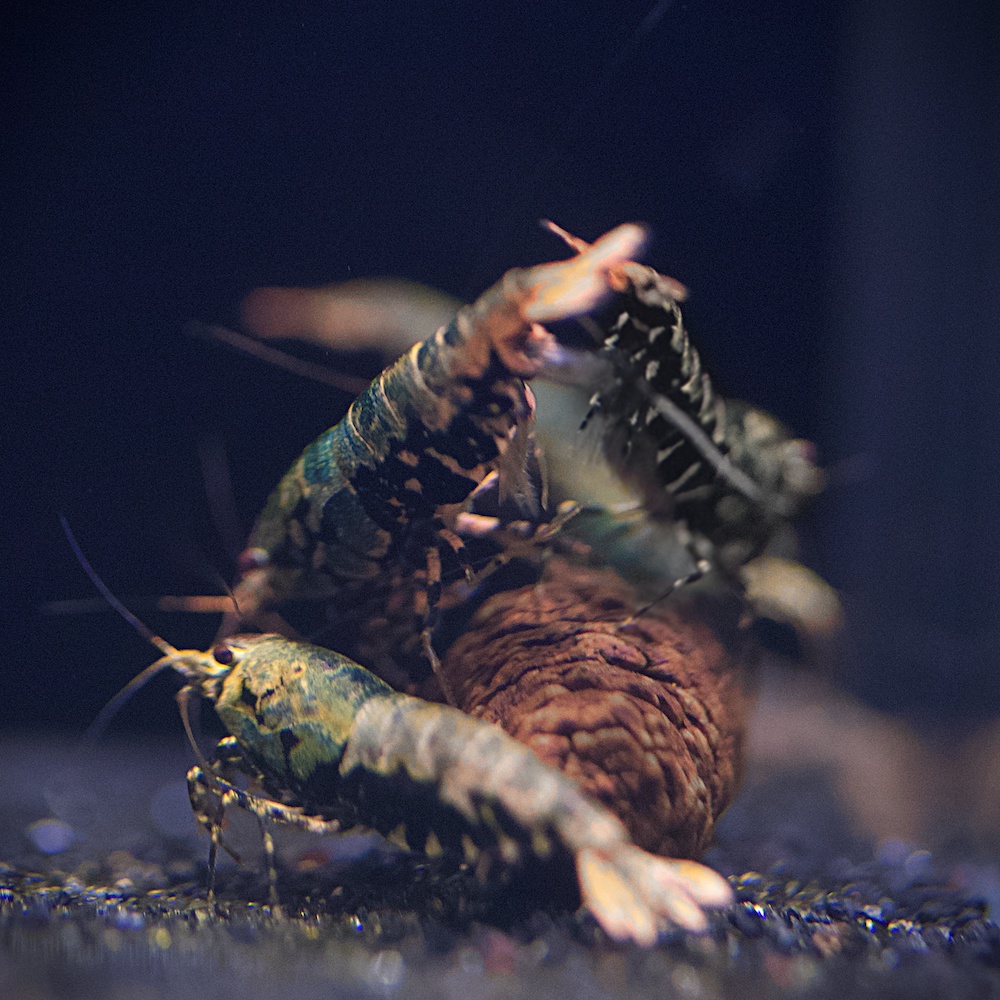Brief Overview of the Delicate Nature of Caridina Shrimp and the Importance of Shrimplet Survival
Caridina shrimp, including popular species like the Crystal Red Shrimp and Bee Shrimp, are prized in the aquarium hobby for their striking appearance and intricate patterns. However, these shrimp are notoriously delicate, requiring precise water parameters and careful handling. Ensuring the survival of shrimplets, or baby shrimp, is crucial not only for sustaining populations in home aquariums but also for advancing breeding programs and maintaining genetic diversity.
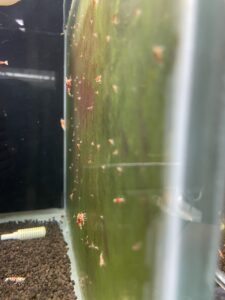
The Unique Challenges and Considerations When Breeding Caridina Species
Breeding Caridina shrimp poses several unique challenges. These shrimp are highly sensitive to environmental changes, including water temperature, pH, and hardness. Unlike more resilient shrimp species, Caridina shrimp often require specialized care to maintain optimal health and breeding conditions.
The presence of predators or even slightly suboptimal conditions can drastically affect their reproductive success. They are best kept in a shrimp only tank with no other fish. Breeders must be vigilant in maintaining stable, clean, and predator-free environments to ensure the highest possible survival rates for their shrimplets.
Understanding Caridina Shrimplet Survival Rates
Typical Survival Rates for Caridina Species Compared to Other Shrimp Varieties
Caridina shrimp generally exhibit lower survival rates compared to other shrimp varieties, such as Neocaridina. This difference is largely due to their more stringent water quality requirements and their greater susceptibility to disease and environmental stress. While Neocaridina species like the Cherry Shrimp can thrive in a broader range of conditions, Caridina shrimplets often face higher mortality rates unless kept in meticulously controlled environments.
Specific Care and Attention Required for Successful Shrimplet Survival
Successful rearing of Caridina shrimplets demands specific care and attention. Key factors include maintaining stable water parameters, providing high-quality food, and ensuring a clean, well-oxygenated habitat. Frequent but gentle water changes are necessary to keep ammonia and nitrite levels at zero, as even minor fluctuations can be fatal to shrimplets. Additionally, providing ample hiding spaces and a mature biofilm for grazing can significantly enhance their chances of survival by offering both nutrition and protection from stress.
Difficulties in Accurately Counting Caridina Eggs and Shrimplets
Accurately counting Caridina eggs and shrimplets is challenging due to their minute size and secretive nature. Eggs are often hidden within the female’s swimmerets and are difficult to see without disturbing the shrimp. Similarly, shrimplets tend to hide within the substrate and among plants, making it hard to monitor their numbers. This can complicate efforts to assess breeding success and to identify issues early, as many shrimplets may go unnoticed until they reach a more visible size.
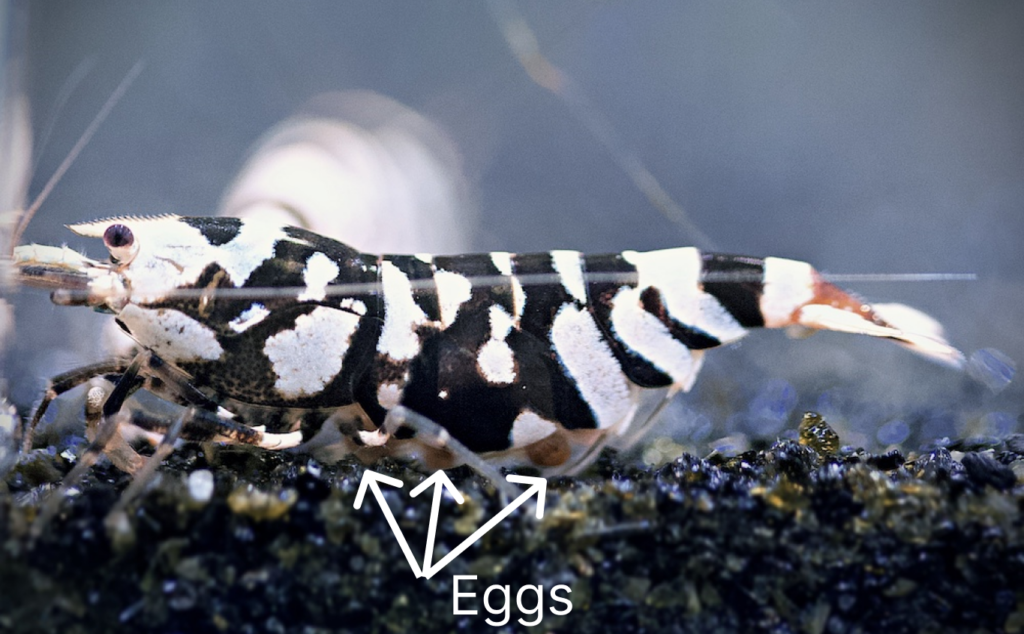
Factors Influencing Caridina Shrimplet Survival
Water Parameters
Caridina cantonensis thrive in environments with very stable water parameters. Fluctuations in temperature, pH, or other water chemistry can cause significant stress, leading to higher mortality rates among shrimplets. Stable parameters are essential to maintain the delicate balance needed for their survival.
Always remember to drip acclimate when moving shrimp from tank to tank. And also remember to drip water during your weekly top off or biweekly water change. By dripping new water, you allow the shrimp a lot of time to adjust to the minor changes in water parameters.
Ideal Parameters Tailored to the Needs of Caridina Shrimp
TDS 100-120
pH 5.4 – 6.2
GH 4-5
KH 0-1
Temperature 60-72F
Importance of Providing Ample Hiding Spots and Plant Cover in Caridina Tanks
Caridina shrimplets benefit greatly from having ample hiding spots and plant cover in their tanks. Leaf litter, moss, and dense plant growth not only offer protection from potential predators but also increase surface areas for biofilm growth, which is a crucial food source for the young shrimplets. Biofilm and detritus accumulation in these hiding spots provide continuous nourishment and a safer environment for the delicate shrimplets.
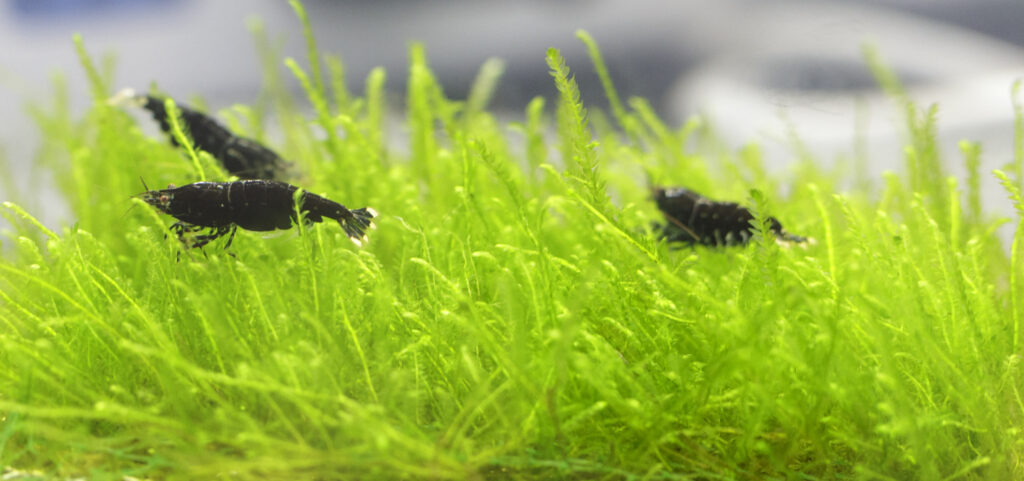
Substrate Depth Considerations and Its Impact on Waste Management and Water Quality
A deeper substrate can aid in better waste management and maintaining water quality. The substrate acts as a biological filter, promoting the growth of beneficial bacteria that help break down waste products. This process helps in maintaining lower levels of ammonia and nitrites, which are harmful to shrimplets. Additionally, a well-maintained substrate supports plant roots and contributes to overall tank stability.
Some breeders, on the other hand, prefer a light layer of substrate for easier cleaning. Although deeper substrates allow for more beneficial bacteria development, it also traps more detritus. Deeper substrates require more frequent gravel vacuuming to maintain proper water parameters. Shallow substrates are sometimes preferred due to it’s ease of replacing. Every 6-12 months (depending on your substrate), your tank soil must be replaced. Replacing aquarium substrate is vital for maintaining stable water parameters. Active substrate buffers and stabilizes pH, hardness, and other parameters. Over the course of half a year to a year, the buffering capacity of the soil depletes, leading to fluctuations that can stress your shrimp. Regular replacing ensures stable water quality. Soil resets prevent issues such as egg loss, and reduced survival rates of shrimplets.
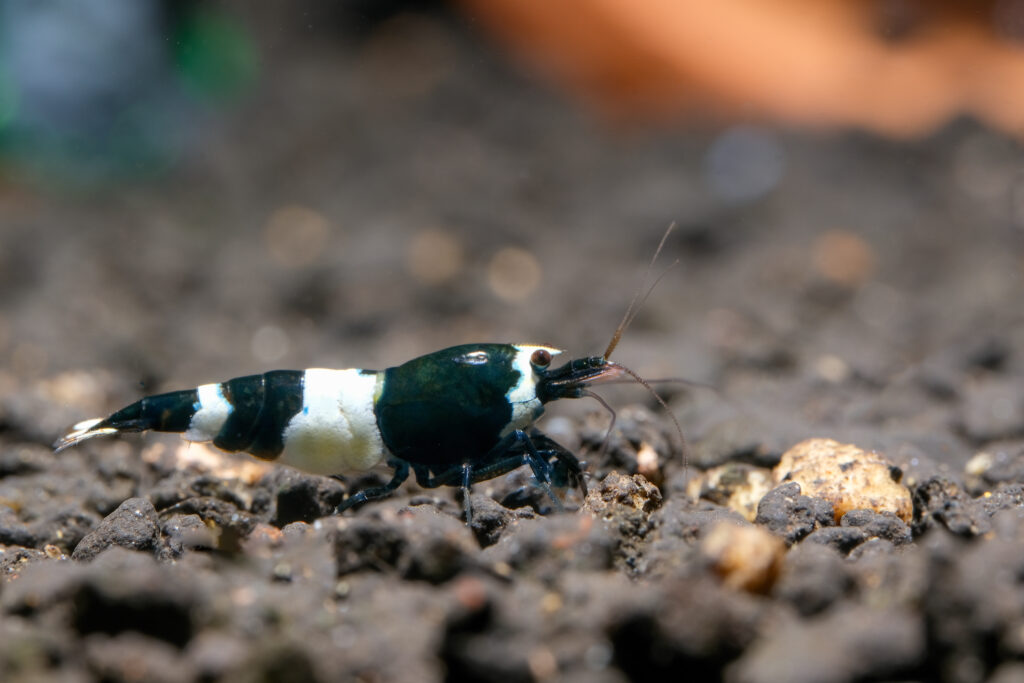
Feeding
The Significance of Offering a Balanced Diet to Meet the Nutritional Needs of Caridina Shrimplets
Providing a balanced diet is crucial for the healthy development of Caridina shrimplets. A diet that includes a mix of high-quality commercial shrimp foods and natural food sources like biofilm, algae, and leaf litter ensures they receive essential nutrients. High-protein foods should be given in moderation to avoid overfeeding, which can degrade water quality.
Natural food sources, such as biofilm and algae, are readily available in a well-established tank and provide a continuous, sustainable food supply that promotes the shrimplets’ natural foraging behavior. Algae walls and biofilm can develop with adequate lighting of about 8-10 hrs a day.
In contrast, commercial shrimp foods are formulated to deliver a balanced nutrient profile, which can be beneficial for growth and color enhancement. However, it’s important to supplement commercial foods with natural sources to ensure a comprehensive diet and to avoid the risk of overfeeding and water contamination.
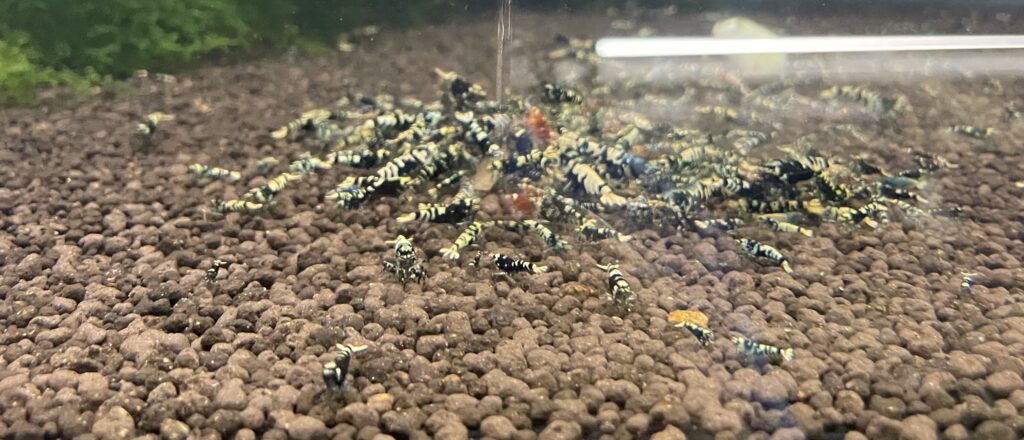
Essential foods for healthy shrimplet development:
Spirulina – This blue-green algae is packed with proteins, vitamins, and natural pigments like carotenoids that help shrimplets achieve their vibrant coloration right from the start.
Nut Hulls – Ingredients like mulberry and Indian almond leaves/hulls provide protein, and fiber. These support muscle growth as shrimplets rapidly increase in size between molts.
Diatom Algaes – introduce a diverse array of microorganisms. These form the biofilms that are a critical part of a shrimplet’s grazing diet.
Calcium – Supplemented calcium, whether from mineral rocks or calcium salts, ensures shrimplets can build their new exoskeletons properly during molting for smooth transitions.
Boiled leafy greens (spinach and cucumber) – Greens should be washed and then boiled for 7-10 minutes and cooled to room temperature to avoid introducing harmful contaminants into your shrimp tank. These provide vitamins, fiber and grazing surfaces.
Soybean snowflake foods – Providing a healthy source of protein to promote caridina muscle growth during their rapid development phases.
